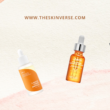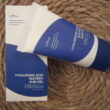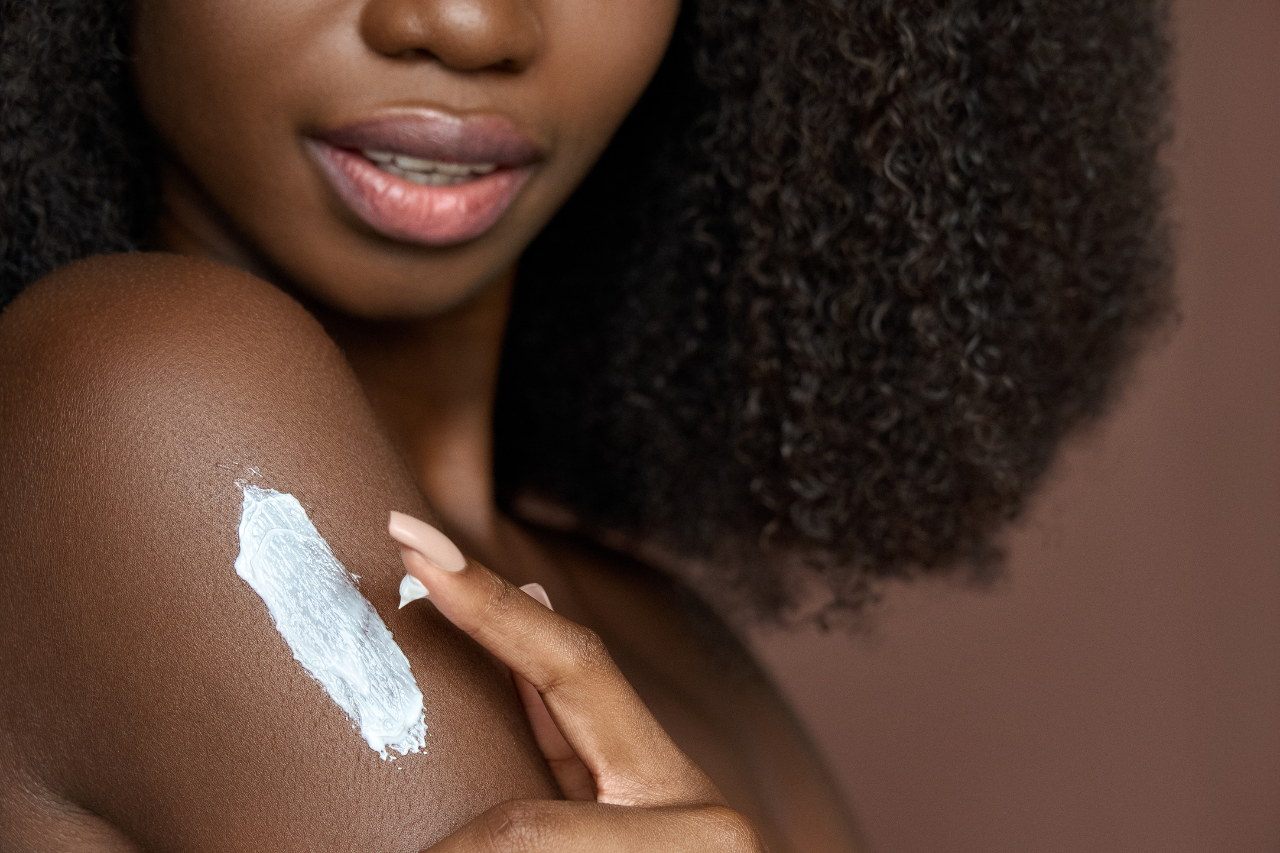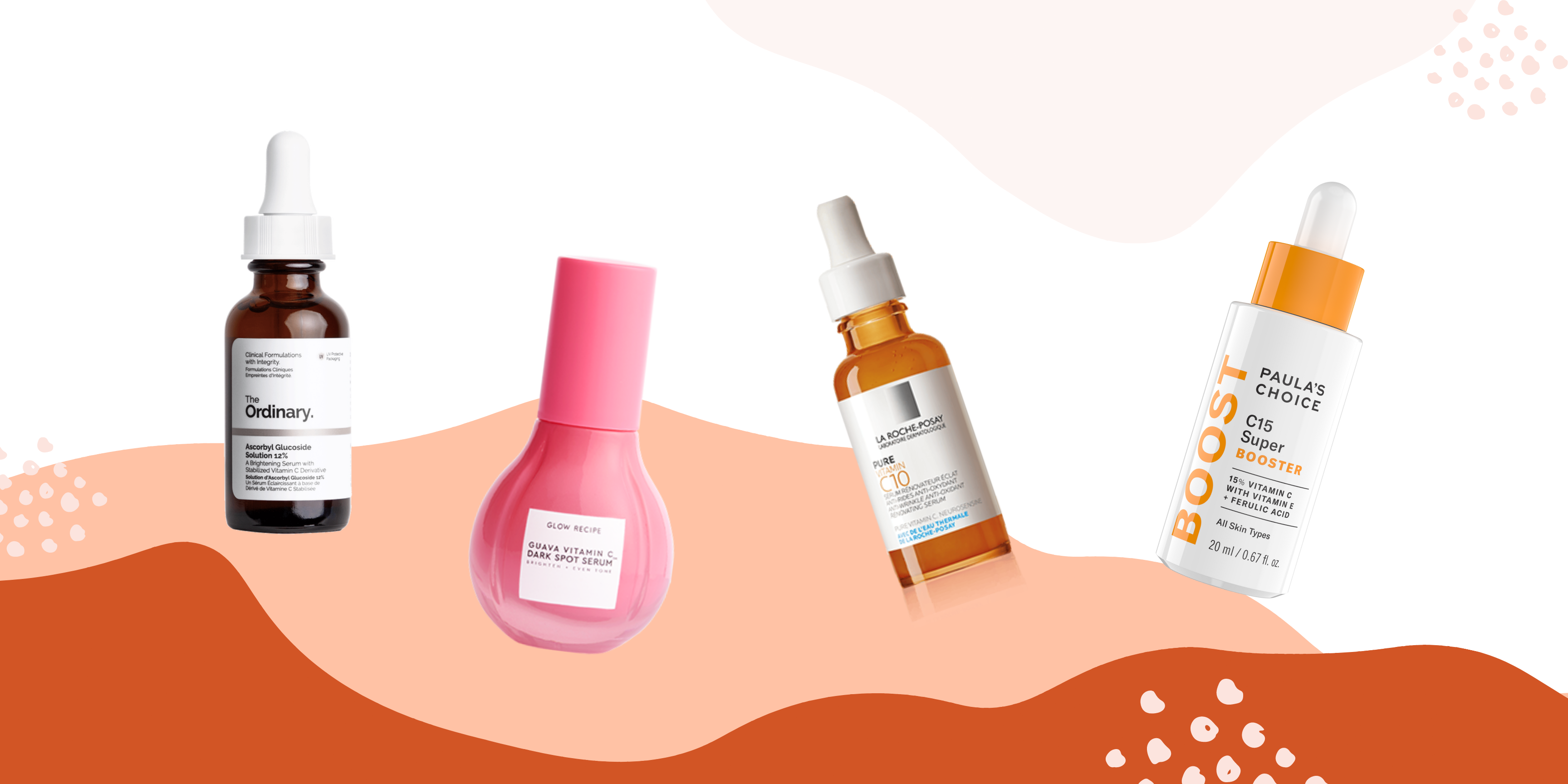Sensitive skin reacts to most things, imagine the double trouble that arises with sensitive skin when shaving. Although I can’t personally relate to the shaving part, I have been dealing with sensitive skin my entire life. Having sensitive skin means being aware of what irritates your skin so you can potentially avoid it.
There must be a better way of shaving sensitive skin instead of ending up with redness and razor burns, right? Also, the no-shave November (if that’s still a thing) will be over soon, so here are helpful shaving tips for sensitive skin. But first, let’s see how sensitive skin manifests itself while shaving.
Common issues with sensitive skin when shaving are:
Irritation and dryness
If you have sensitive skin, most skincare products can easily irritate your skin. And this includes the products you use while shaving. If you are using harsh cleansers, they can irritate your skin, and cause itching, or burning. Another thing associated with sensitive skin is dryness. Dry, sensitive skin needs extra TLC and gentle ingredients with moisturizing benefits. More on that, in a minute.
Razor bumps
If you are reading this articles, I am assuming you have already experienced the pain of razor bumps. Razor bumps are itchy, painful, red bumps that you get as a result of a close shave or just ingrown hair blocking the hair follicle. Hair follicle is your skin’s opening that allows hairs to grow. When these hairs block the follicle, they get inflamed. As a result, you end up with the unpleasant feeling of inevitable razor bumps.
Dead skin build-up
Every skin gets a dead skin build up, and the same goes for sensitive skin. When there is too much dead skin blocking the hairs, your to set yourself up for more friction and bumps. If you exfoliate regularly though, you can avoid these potential problems.
Don’t get too worried about it, all you need is a bit of skincare advice and shaving tips for sensitive skin.
These are a step by step tips on how to shave sensitive skin, so we can get an idea of the entire process.
Tip #1. Choose your tools right: Best razors for shaving sensitive skin
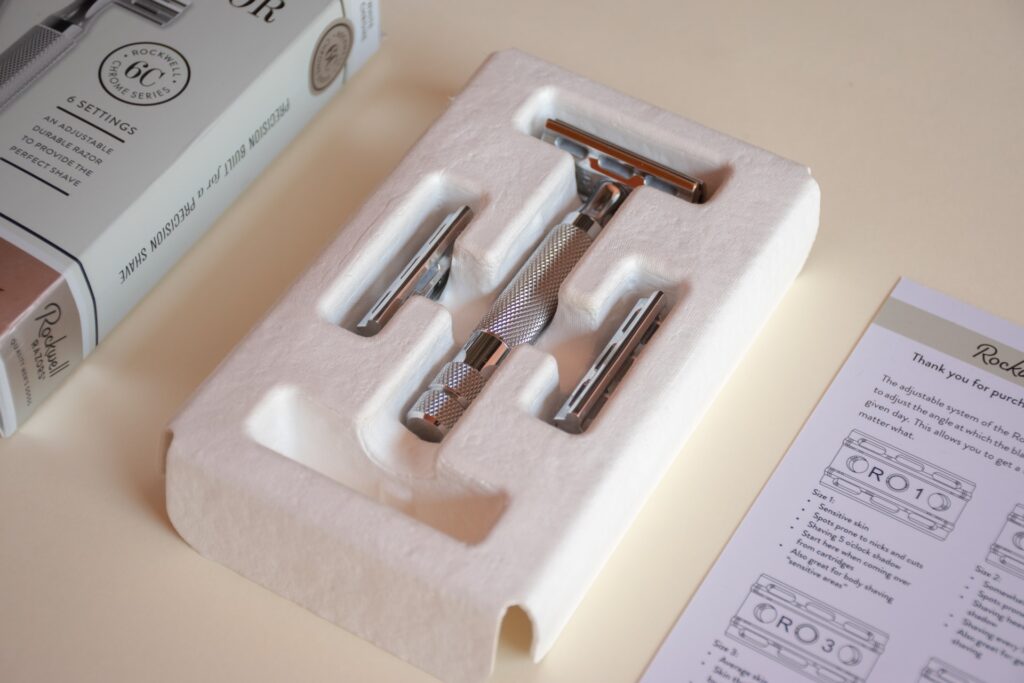
Just like a painter wouldn’t paint without brushes, the shaving artist inside you shouldn’t start shaving without the right razor.
The best razor for sensitive skin are single blade razors. Some brands would make you believe that multiple blade razors are a better option. That couldn’t be further away from the truth. Less is more when it comes to shaving sensitive skin. Here is why: your skin doesn’t need to get in contact with more than one razor. Multi-blade razors are more likely to cut your skin and cause a burning sensation. Old school safety razors (aka double-edged razors) are your best bet here, not only for the skin, but also for the environment. Say goodbye to the plastic multi-blade razors era!
Also, make sure you opt for a sharp razor as they make for a cleaner, smoother shave.
Tip #2. Exfoliating the skin before shaving sensitive skin can help
Now that we have figured out what razors to use, it is time talk about skin. Finally!
You shouldn’t start your shaving routine without any skin prep. This is especially important for shaving sensitive skin. Exfoliation is a key step to getting your skin smooth and fresh so the razor easily glides over the skin. You also prevent those razor bumps and ingrown hairs from forming when you exfoliate.
Naturally, the best to exfoliate sensitive skin is by using chemical exfoliants. AHAs like Lactic acid, Mandelic acid can are excellent for removing dead skin off gently. However, if you want something like a physical scrub, be careful not to overdo it. Go for gentle scrubs that are formulated without harsh particles, like walnut shells, for example. Or, you can use body scrubs before shaving so it will make the shaving more comfortable, whether it is your face or body.
Tip #3. Preparing to shave: Never shave on dry skin

This seems like a no-brainer, but it is still essential to highlight. You don’t want to dry out sensitive, dry skin even further, right?
First, you have to make sure that your skin is warm. You don’t want to start shaving when your skin is cold or dry. Get out of the shower and let that steam soften your skin. This will help with the application of other products like shaving creams or oils.
As for what to shave with: If you are into using shaving creams, don’t use the shaving from straight out of the can. They can be quite drying. Instead, get a shave brush and a shaving cream that comes in a jar or a tube. Using a shave brush will help you get that close and comfortable shave. Just make sure that the bristles are soft enough. You can opt for shave brushes with natural or synthetic bristles.
Some people go for shaving soaps, which can also work. Keep in mind that they might not provide enough layering for a smooth shave. Plus, you need a shaving soap with nourishing ingredients like coconut oil, jojoba oil or shea butter for sensitive skin shaving.
Tip #4. Introduce shaving oils to your routine
Using pre-shave oil is like putting on a shield before shaving sensitive skin. Shaving creams only do one thing – shave. As simple as that. However, when you have sensitive skin, you need to take some extra care for the pre-shave phase. Enter shaving oils.
A good shaving oil includes great ingredients like sunflower oil, primrose oil, sandalwood oil, jojoba oil that will nourish sensitive skin without clogging pores. Plus, shaving oils packed with antioxidants like Vitamin E, Panthenol, Allantoin can work wonders for sensitive skin when shaving. Although fragrance isn’t a bad thing, it can irritate sensitive skin. It is better to go for unscented pre-shave oils and avoid products with fragrant oils like lemon, mandarin, grapefruit, bergamot, peppermint, etc.
Tip #5. Get into shaving: Always shave with the grain
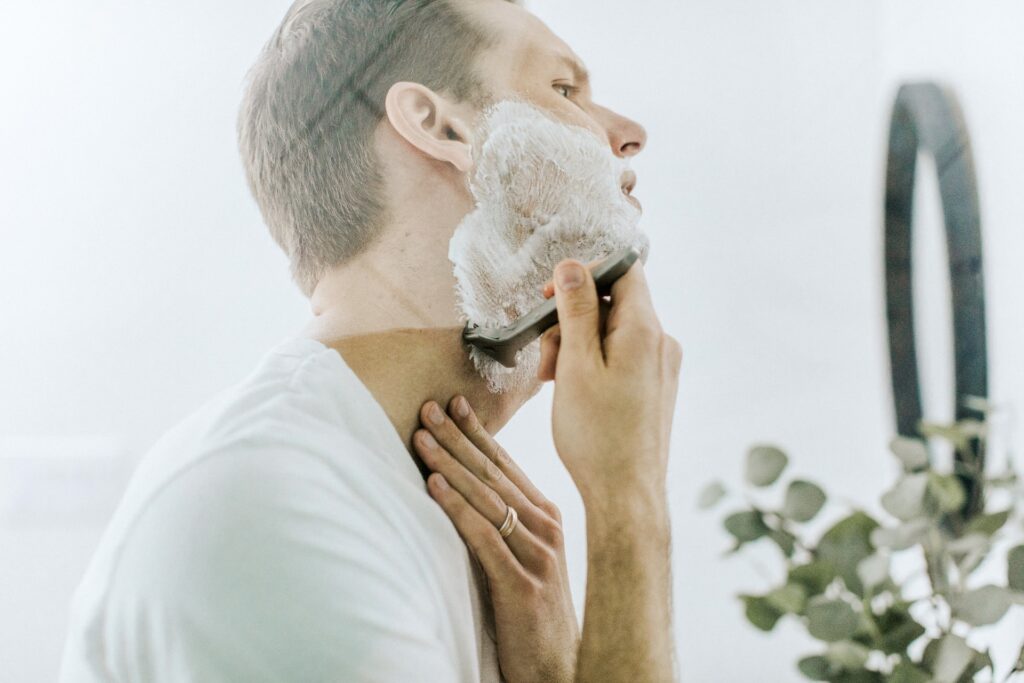
Now, the actual shaving part!
- Start gently, you don’t want to add pressure to your skin which is already sensitive. Let the razor (the safety razor, hopefully) move over your skin slowly and smoothly.
- Shave with the direction of your hair growth – meaning, shave with the grain! If you are not sure as to what direction it is, examine your skin. Everybody’s grain is different. Simply follow the roots of your hairs. When you rub your hand in the direction of the hairs, it shouldn’t lift up. Just follow the direction is gets smoothed down.
- Take your time. Don’t rush with shaving, it will only lead to cuts and wounds. Make it a me-time, self care that your skin deserves.
- Now that you are done shaving, rinse off all the remaining shaving cream/oil. Pat your skin dry, don’t tug or pull the skin. Follow up with an aftershave.
Tip #6. A post-shave routine is a MUST
We have covered the pre-shave and the shaving process itself. You already know what razor and shaving cream to use. It is time to move to the post shave regimen which mainly involves, you guessed it, aftershaves.
Is it an absolute must to have an aftershave? The answers is, hell yeah.
When you shave your skin, your hair isn’t the only thing that gets cut. You also cut the outer layer of the skin. Constantly cutting the outer layer of the skin is bad news for your skin barrier and naturally, it is moisture level. Your skin barrier (or lipid barrier) is what keeps all the outside nasties, dirt, bacteria from getting into your skin. So, you need to provide your skin with moisture , particularly when shaving sensitive skin.
The aftershaves to look for are formulated with moisturizing, emollient type ingredients. Aftershaves with Hyaluronic acid, shea butter, squalene, calendula, chamomile extract, glycerin can prevent possible dryness as a result of shaving. Also, steer clear of aftershaves with alcohol that can dry out the skin.
Top products picks: Best aftershaves for sensitive skin
Best alcohol-free and fragrance-free formula: Jack Black Post Shave Cooling Gel – $22.00
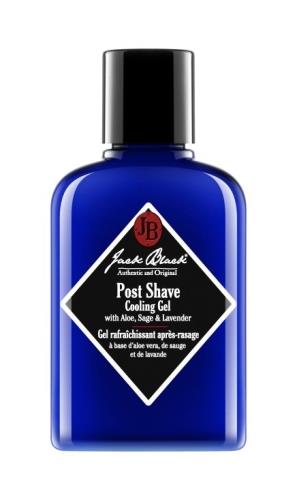
This one by Jack Black is the ultimate aftershave for shaving sensitive skin. The formulation is alcohol-free and fragrance-free, and provides instant relief for redness prone, sensitive skin. If you are struggling with razor burns, you should give this one a shot. Also, the cooling effect is amazing for sensitive skin that experiences itching. It has a gel consistency that immediately sinks into the skin!
Best budget friendly aftershave for sensitive skin: NIVEA MEN Sensitive Post Shave Balm (3 pack) – $20.37
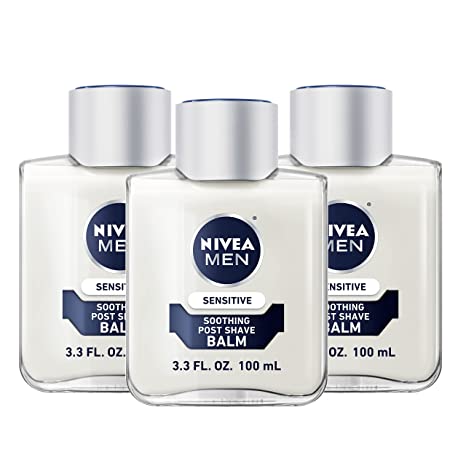
Tried and true, cult-favorite post shave balm nourishes and moisturizes even the driest skin. It is rich in Vitamin E and Chamomile extract, deals with tightness and stubble itch that is common for sensitive skin shaving. What’s more is that it is also very affordable at 20 bucks for a pack of three! The only catch is it has a light scent, but the online reviews didn’t report any irritation due to that.
Best aftershave combining a moisturizer: The Art of Shaving Unscented After-Shave Balm & Daily Moisturizer – $45
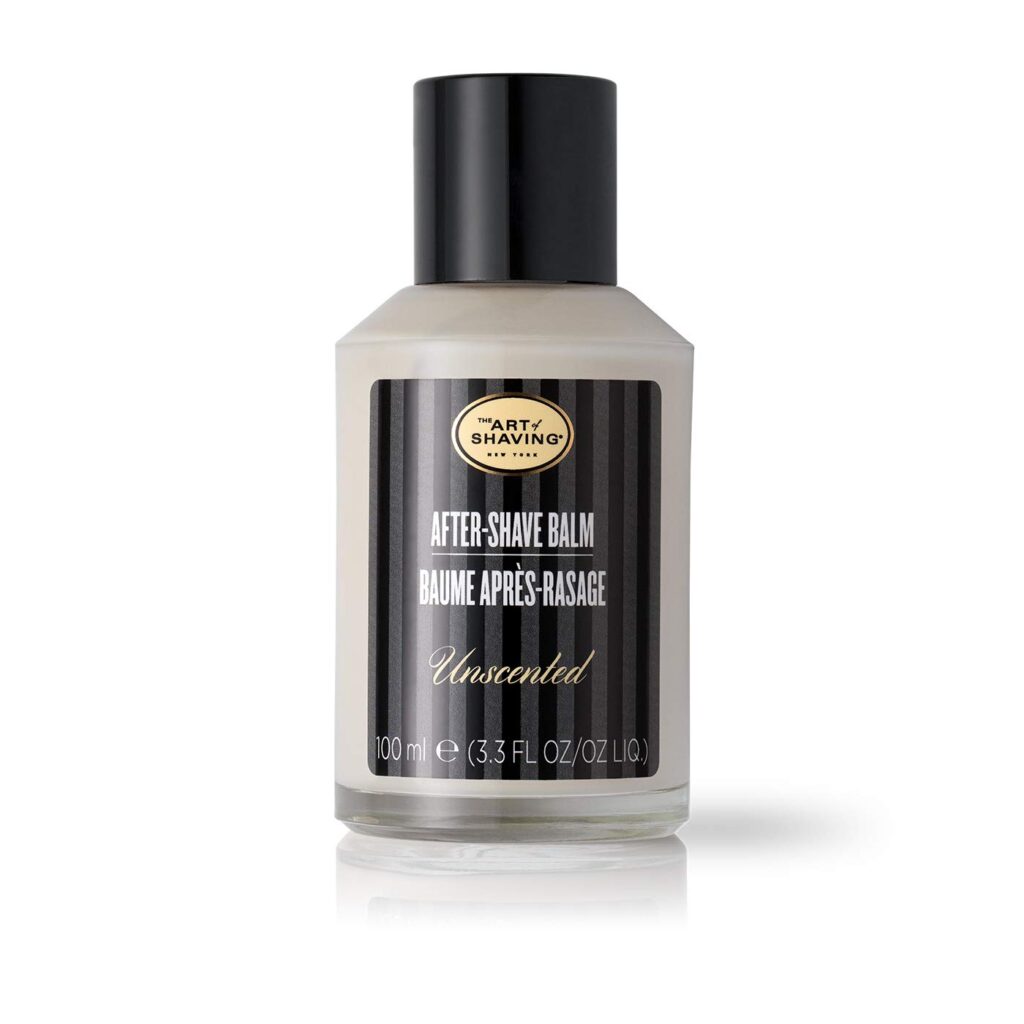
The moisture aspect after shaving sensitive skin if often neglected. If you are in a hurry all the time and you need an aftershave + moisturizer at the same time, this product is for you. Shea butter and jojoba oil that we have touted earlier do an excellent job together when it comes to packing moisture into the skin. (for 8 hours!) Plus, they provide an anti-aging boost by targeting fine lines and improving skin elasticity. The Art of Shaving brand is very popular among professional barbers, so it’ll be like an actual “going to a barber” experience at your hands.
#7. Bonus tip: Store your razors in a dry place
If you store your razors in your bathroom, go get it out of there now. Keeping your razors in a damp environment will make the blades go dull. It is also not the best place in terms of cleanliness. Bacteria can get to razors faster if you store them in bathroom that is prone to getting bacteria easily.
Make sure that you keep your razors in a dry place, like a drawer in your bedroom or a vanity shelf. In addition, making sure your razors are cleaned properly can extend the lifespan of the razors.
Final thoughts
Shaving sensitive skin comes with its own challenges, sure. However, once you know the do’s and don’ts, it gets easier. Learning how to shave sensitive skin properly will take the whole experience to a whole new level. While doing so, take care of your skin and its moisture level, so it won’t dry out or get irritated.



